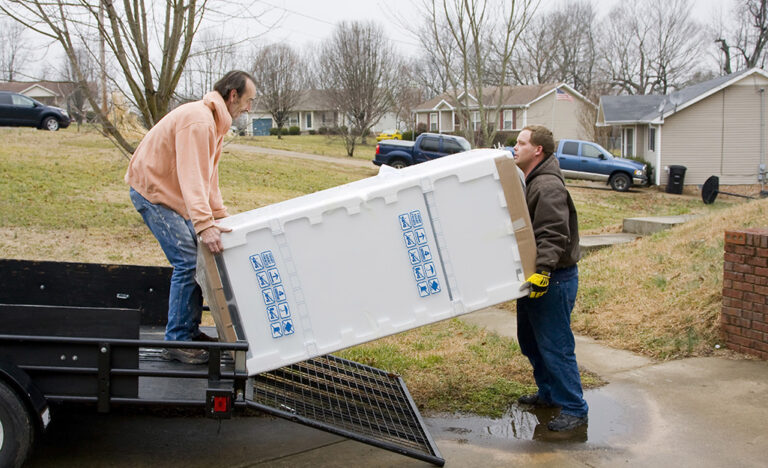How to Move a Refrigerator: What You Need to Know Before You Start

Relocating large appliances requires careful planning and proper techniques to avoid damage to the item and your property. Working with a dependable moving team can ease this burden, but understanding the process remains essential whether handling the move yourself or supervising professionals. Refrigerators present unique challenges due to their size, weight, and internal mechanisms that can be damaged if not adequately prepared for transport. From ensuring adequate clearance through doorways to properly securing internal components and defrosting the unit, each step plays a crucial role in a successful move. This comprehensive guide outlines the five essential considerations when relocating a refrigerator, helping you avoid common pitfalls and ensuring your appliance arrives safely at its new location.
Measuring Doorways and Pathways
How do you ensure your refrigerator will fit through doorways and pathways? Start by measuring the dimensions carefully to avoid any potential obstacles during the move. First, measure the width, height, and depth of your refrigerator. Write down these measurements so you can easily reference them later. Next, measure the narrowest points of your doorways, hallways, and any turns the refrigerator will need to make during the move. Compare these measurements to those of your refrigerator. Remember to account for any protruding handles or hinges that may add to the overall width. By taking precise measurements beforehand, you can guarantee a smooth and hassle-free moving process for your refrigerator.
Securing Loose Items Inside
To prevent any shifting or damage during the move, securely fasten loose items inside your refrigerator using strong adhesive tape or straps, and remove all loose shelves, drawers, and bins from the fridge. Take out any food items and store them separately. Secure the shelves by taping them to the interior walls of the refrigerator. Use adjustable straps to hold larger items like drawers in place. Make sure the doors are securely closed by securing them with tape or a cord. This step is pivotal to prevent any internal damage to the refrigerator components during transportation. Once all loose items are secured, your refrigerator will be better prepared for a safe and smooth move.
Emptying and Defrosting the Fridge
Before moving your refrigerator, it is important to empty and defrost it to guarantee a successful and hassle-free relocation. Start by removing all items from the fridge, including food, shelves, drawers, and any loose items. Dispose of perishable items and pack non-perishables separately. Please switch off the refrigerator and unplug it from the power source. Allow the fridge to defrost naturally by leaving the doors open. Place towels around the base of the refrigerator to catch any water that may drip during defrosting. Once all the ice has melted, clean the interior thoroughly with a mild detergent and dry it completely. Defrosting may take several hours, so plan accordingly before moving the refrigerator.
Gathering Necessary Supplies
Before moving your refrigerator, gather the necessary supplies for a smooth and efficient process. You will need a dolly or hand truck to transport the fridge easily. Make sure to have moving straps or a strong rope to secure the fridge on the dolly. Have a measuring tape to confirm the refrigerator will fit through doorways and hallways. Get some furniture sliders to help move the fridge across floors without causing damage. Have cleaning supplies ready to clean the area where the refrigerator will be placed in the new location. Moreover, packing materials like blankets or bubble wrap should be kept to protect the fridge during the move.
Enlisting Help or Hiring Professionals
Consider enlisting the help of family or friends or hiring professional movers to assist in safely moving your refrigerator to its new location. When choosing between the two options, consider the weight and size of your refrigerator. Professional movers may be the best choice if it’s a larger model or located on a different floor due to their experience and equipment. However, if you decide to go with friends or family, make sure they are physically capable of lifting heavy objects and have clear instructions on how to handle the refrigerator safely. Communicate the plan beforehand, assign roles, and ensure everyone understands the precautions to avoid injuries or damages during the move.
Related Articles:
